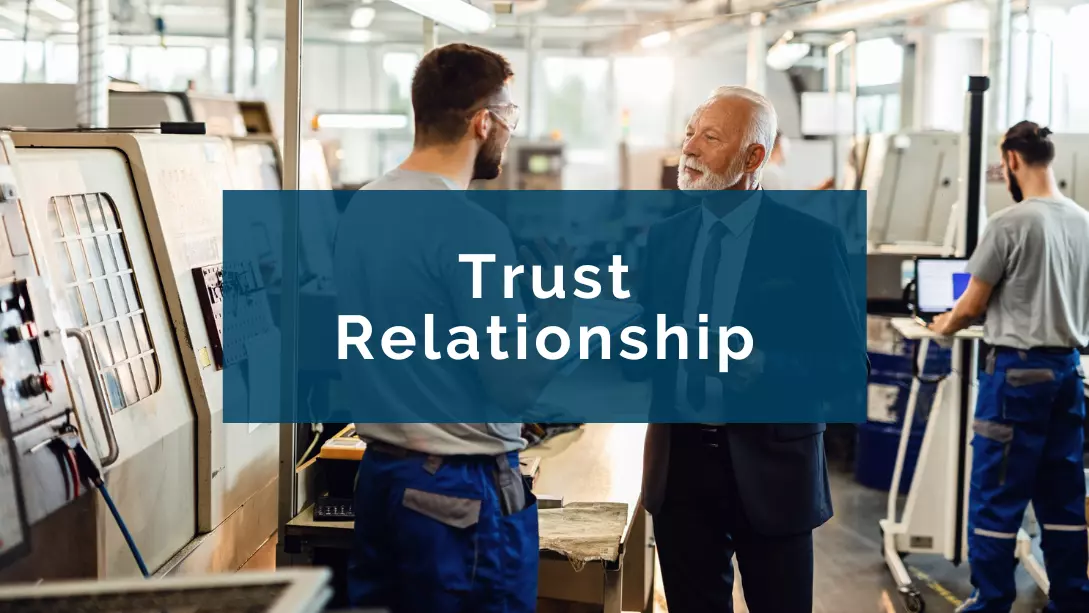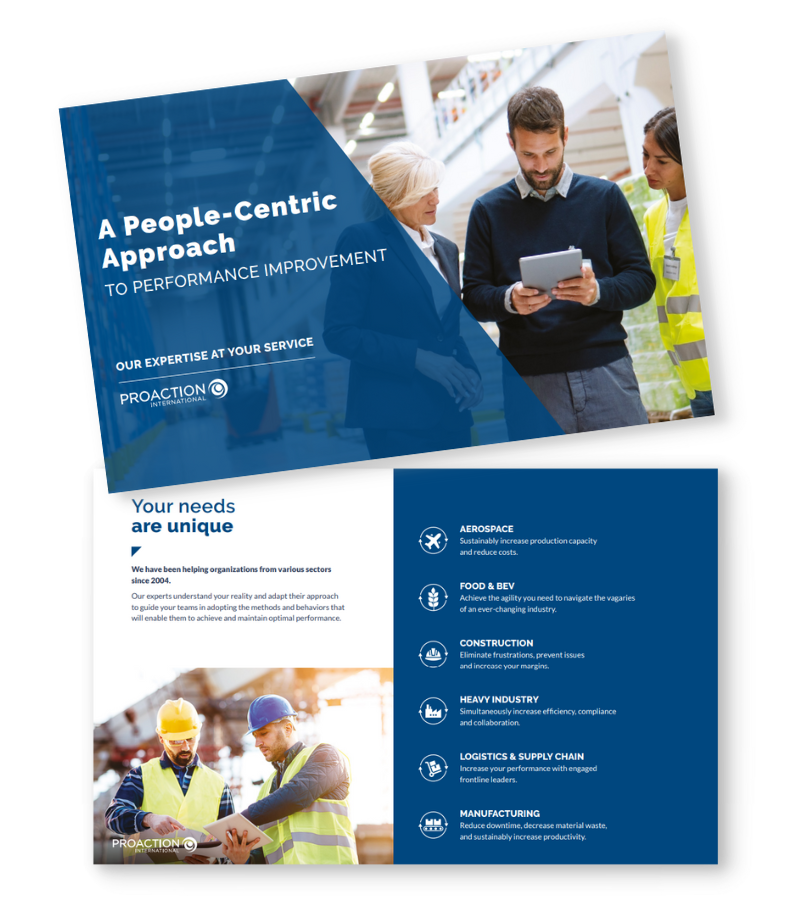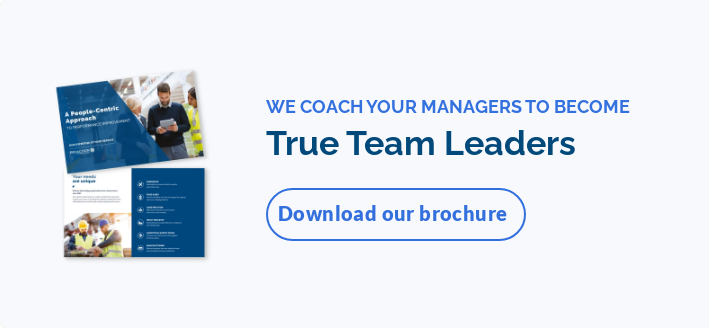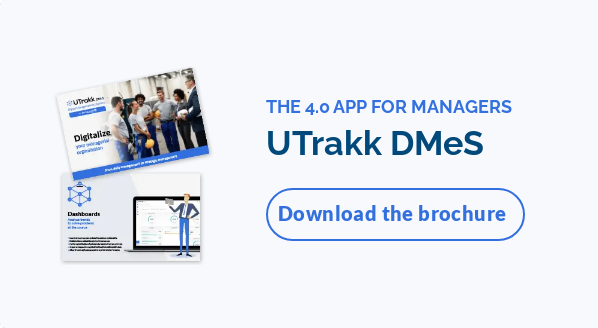ARTICLE BY PASCAL BOULAY
DirectorOperations, Proaction International
For over fifteen years, I have had the opportunity to work with entrepreneurs and executives in their daily environment. One activity I love to do with them is to take a site tour and meet their employees.
As a consultant, the site tour is the perfect opportunity to get to understand the culture of an organization. It is also an activity that allows executives to X-ray the patient, so to speak - to detect fractures that affect the performance of their business.
First, let’s take a quick look at the reasons for this. Then, I will offer my advice for building a better relationship of trust with your employees while improving the performance of your organization through effective site tours for executives.
Site tours: taking the pulse and mobilizing the troops
A director or even a president who takes a tour of the activities will be able to measure the quality of the management team’s backbone.
The level of cleanliness and the quality of the organization of work both at the point of execution (e.g. in the factory) and in the offices are directly related to managerial rigor. This is a first rule to implement to improve your company’s performance. Moreover, rigor favors the engagement and motivation of your employees and, conversely, disorganization will negatively affect your employees.
You may also use the tour to assess the quality of the relationship between employees and managers as well as your teams’ state of mind. And if there are issues that have not been resolved quickly, they will let you know.
Remember that the majority of daily interactions between executives and employees are exchanges on technical topics. This type of interaction does not build a relationship of trust. Let alone deploy the strategic vision.
How to build trust relationships through a site tour?
The benefits of a good field trip are numerous: listening, the feeling of belonging, the satisfaction of a job well done, a culture that values everyone's contribution and encourages creation and innovation through interactive control systems that allow for anticipation of the future and staying one step ahead...
Here are five tips that will help you build a better relationship of trust with your employees while improving the efficiency of your organization.
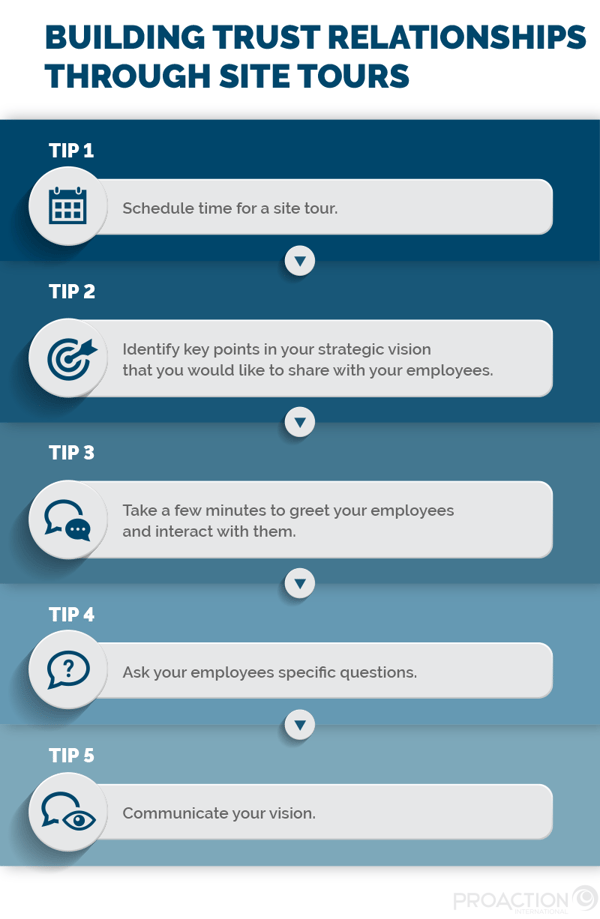
1. Schedule time for a site tour.
It may seem trivial, but a daily informal tour or at least a weekly visit with your employees will allow you to create a privileged listening environment.
A regular presence reduces the distance between the employee and their executive, creating a link conducive to discussion. This will give you an opportunity to measure the state of mind of your troops.
2. Identify key points in your strategic vision that you would like to share with your employees.
We often find that organizations communicate the vision and objectives in a presentation at the beginning of the year... and then forget to talk about it again, until the end of the year when reviewing the lapses and explaining that the objectives have not been achieved.
Even if the tour is informal, a light preparation will allow you to communicate specific messages promoting the achievement of goals that you have set.
These should be related to the strategic plan, your vision or simply a "good result or good news" that you want to highlight. The recognition that you communicate to an employee will have a beneficial impact on their mobilization and engagement.
3. Take a few minutes to greet your employees and interact with them.
Invest a few minutes with your employees, take an interest in them by asking about their family and their life outside of work. You will be able to keep your fingers on the pulse and detect if there are any issues. If so, dig around to determine if there are critical elements that need addressing.
Remember, a relationship of trust is built over time. This means it is something we have to keep working at. After a while, your employees will open up to you more.
4. Ask your employees specific questions.
The quality of the information collected often reflects the caliber of questioning. Even if we ask an open-ended question, it must be surgical.
Here are some examples that work every time:
- What is the biggest problem affecting your work?
- What are you most proud of this week?
- If you had a million dollars, what changes would you make?
Have something on hand to take notes, whether a sheet of paper, a tablet or a phone. This will allow you to follow up over time and demonstrate your real interest in improving the situation.
With a more talkative employee, it is best to use leading questions as part of your questioning technique:
- Name one thing you would like the organization to:
- Continue to do
- Start doing
- Stop doing
- Are you satisfied with the quality of the product?
5. Communicate your vision
Strategic planning is conceived in a conference room but is carried out in the field. It is not sufficient to present it once to create movement. To deploy your strategic vision, you will need to repeat and intensify your message.
For such a plan to meet with success, employees must take ownership, regardless of their responsibilities within the organization. Like an organized tour, everyone must be aware of the destination, as well as the reasons why one seeks to go there; the famous Why. You are here to help them identify How to achieve the objectives.
Be your team's best ally
Your role is not to take charge of solving all the problems you identify, but to be able to know the challenges as you assist your managers. In addition, it will allow you to get closer to your employees and create a lasting and effective connection. Remember that employees do not work for an organization, but for their manager or executive.
When you recognize the efforts and achievements of your employees in connection with your long-term vision, you nurture their engagement and commitment. A successful team is one that has healthy engagement vital signs, which also translates into a more efficient organization.
The words of engagement
A study by the consulting firm Gallup established a list of keywords that employees use based on their state of mind. Therefore, it is possible with these words to determine whether the employee is engaged or disengaged.
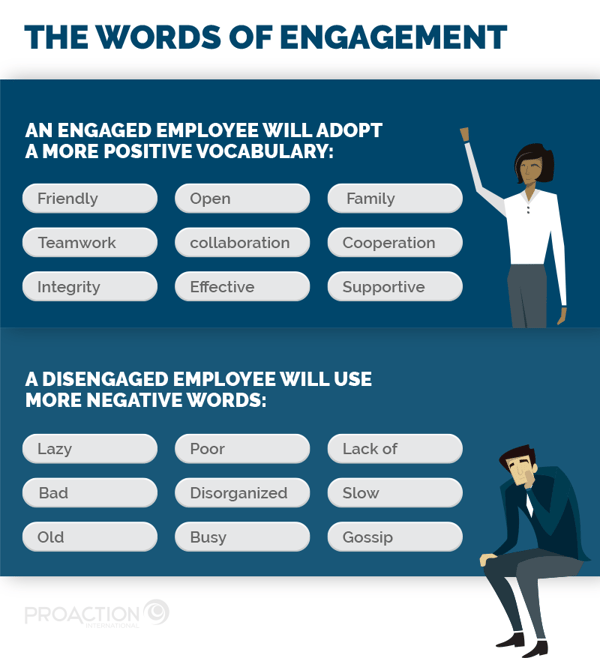 An engaged employee will adopt a more positive vocabulary, while on the other hand, a disengaged employee will use more negative words.
An engaged employee will adopt a more positive vocabulary, while on the other hand, a disengaged employee will use more negative words.
But to have your fingers on the pulse, it is imperative to create a dialog based on trust and be present in the field. To get there, just put into practice the 5 tips that I presented to you.
For more tips and tricks that improve your management for better human-centric business performance, the experts at Proaction International are here to help you develop your leadership.




